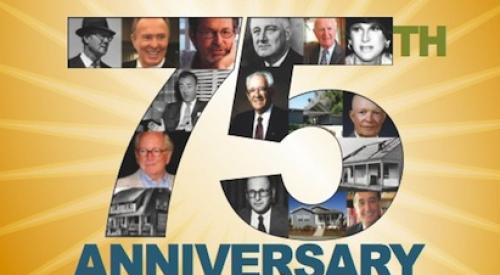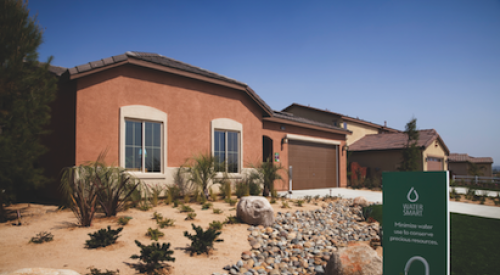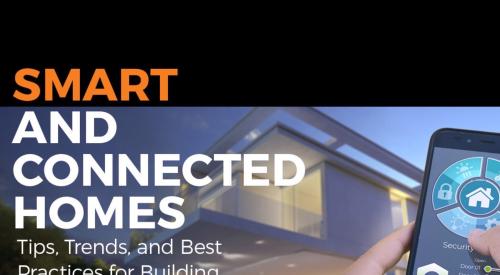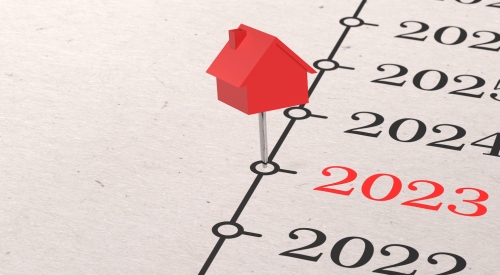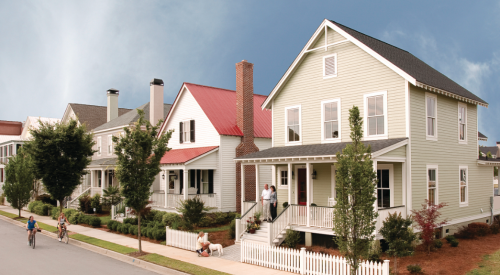Nothing in the home building industry surpasses the scale of the International Builders' Show. Its sheer size and the opportunities to learn about the latest issues and solutions, network with peers and discover new products make for a home-building extravaganza essential to the industry.
The 2007 show became the largest in IBS history, according to the NAHB. A record 1 million net square feet of exhibits showcasing products and services of more than 1,900 suppliers in 300 industry categories packed into the West and South halls of the Orange County Convention Center in Orlando, Fla.
Professional Builder strategically deployed its staff to capture the most knowledge and get the most mileage out of this year's IBS. Here's a small sampling of what we took home.
The Industry: A Formidable ForceNAHB representatives say nearly 104,000 members of the home building industry convened in sunny Orlando for four days of thought-provoking discussion on the future course of the home building and remodeling industry.
Amid the controlled chaos that has represented the industry for the last year, topics such as economics, labor, building green and designing homes for an aging population reigned supreme.
Economics was forefront on the minds of most attendees. Housing economists David Seiders, David Berson and Frank Nothaft provided an encouraging message to most, predicting a "gradual recovery" was in the midst.
Home builders and remodelers looking for a competitive edge in the baby boomer markets whet their appetites with the numerous educational sessions geared toward that market. News about the 55-plus population reaching 85 million in the next seven years complemented presentations about the home of the future as well as design seminars geared at details to improve customer satisfaction.
Green is GoldenGreen building practices and innovative green products had a dominant presence this year.
During the NAHB Green Building Subcommittee forum, Fort Worth, Texas, custom home builder Don Ferrier of Ferrier Custom Homes made some practical sense out of the green movement. Ferrier proved green practices were affordable in a house he built for his daughter, affectionately named "Heather's Home," which features amenities like low-flow faucets, dual-flush toilets, decorative compact fluorescent lighting, structural insulated panel walls and the latest heating and air conditioning systems. The home also utilizes landscaping from the local area and a unique ground water drainage system.
Also presenting at the forum was Matt Belcher, president of the Home Builder's Association of St. Louis and Eastern Missouri. Belcher presented an update of a green building program launched in 2005 that follows the mantra of the NAHB's Model Green Home Building Guidelines. Belcher said more than 20 homes have been built to the specifications since the program's inception, with more currently under construction or in the planning stages, and he's hoping their efforts can become a model for other builders across the nation.
But green building isn't confined to custom builders and local associations. Joyce Mason, vice president of marketing for Pardee Homes in Los Angeles, said production builders, too, are seeking to include "flexible green" to better meet market preference. She highlighted the success of the firm's Living Smart program to promote energy efficiency and pointed out that to stimulate demand, consumers also need reliable information about financial as well as ecological advantages of green building.
Emerging MarketsFormer U.S. Secretary of Housing and Urban Development Henry G. Cisneros headlined a presentation on Latino home and neighborhood design, which was based on his book, "Casa Y Communidad: Latino Home and Neighborhood Design." Cisneros said the Latino population in the United States will grow to 98 million from 35 million by 2030. He attributes the increase not to immigration, but to the fact that Latino families tend to be younger and have more children per family than other groups.
Cisneros, chairman of CityView, a development firm funded to build affordable homes in urban areas, said builders need to pay attention to the housing needs of this growing market.
Cisneros said the Latino market is attracted to features such as outdoor gardens, large kitchens and multiple bedrooms to accommodate larger, multi-generational families, as well as design touches such as entry arches and decorative use of color. Durable materials that withstand the wear and tear of children can be a plus, he said. A gas stove is desirable because cooking that often requires an open flame is used by this ethnic group, he said. Extra space for parking several cars is also an important consideration because multiple workers often live in one home.
Plethora of Innovative ProductsYou often hear home builders are slow to change, but this year product manufacturers looked to break the pattern. Problem-solving innovations this year included architecturally integrated solar panels that address high energy costs and retractable storm screens, shutter systems and hurricane panels designed to meet coastal zone codes. And low-maintenance is still a top priority. New products such as a heated aluminum deck trump composite plastics because they won't grow mold.
| Acknowledgements | ||
| Professional Builder editors Nick Bajzek, Erin Hallstrom-Erickson, Mark Jarasek, Felicia Oliver and Matt Power contributed to this article. | ||
